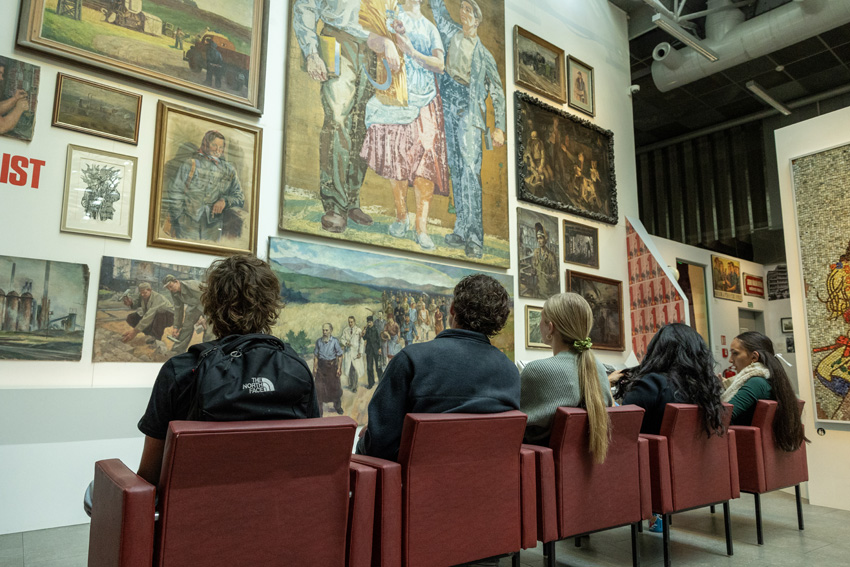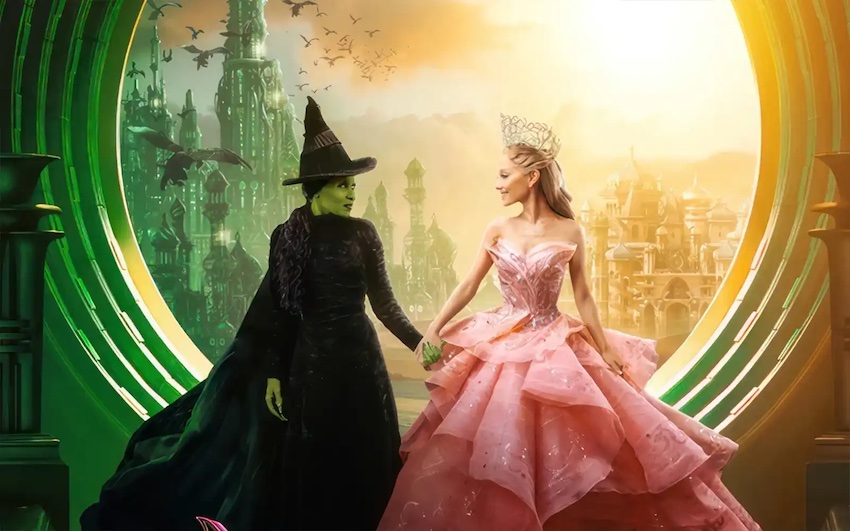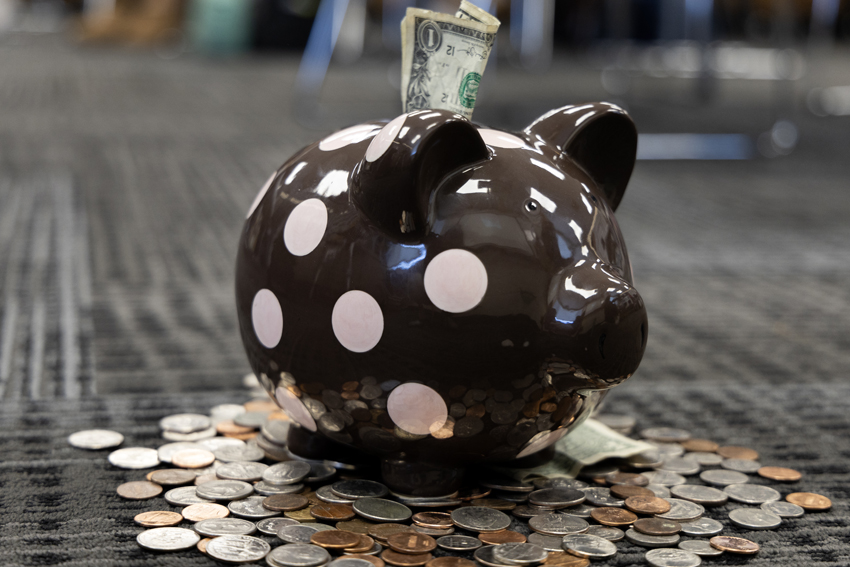Greetings of holiday cheer are heard all around this time of year. It’s the phrase that signifies the season: “Merry Christmas.” But how much do you really know about Christmas, beyond the fact that it celebrates the birth of Christ?
Why, for example, do we celebrate Christmas on Dec. 25, since no one knows exactly when Jesus was born? How did trees — as in, Christmas trees — come to be associated with the holiday? And how did Santa Claus get into the act?
First things first.
While nobody can be sure exactly what day — or even year — Jesus was born, Luke gives us some clues in the Bible. He writes that shortly before Jesus’ birth, Caesar Augustus sent out a decree that “all the world should be taxed” and that this happened when Cyrenius was governor of Syria.
Ancient records show that census took place around 7 or 6 B.C. Matthew writes in the Bible that Herod, the king of Judea, ordered the massacre of all male children under the age of two in Bethlehem to try to kill the Messiah. Since Herod died in 4 B.C., that means Jesus was probably about two or three years old before the king died.
That would place the birth of Jesus around 6 B.C. And that would fit in with Luke’s statement that Jesus was about 30 years old in “the 15th year of the reign of Tiberius Caesar,” which would have been about A.D. 28 or 29.
It is in Antioch in the middle of the second century that we find the earliest reference to Christmas being celebrated on Dec. 25. Because the Christian Church was a persecuted minority, no official determination about a celebration was made until the fourth century, when Constantine, the Roman emperor, embraced Christianity.
That ensured its legality and future domination of Western culture.
According to a Roman almanac in the year 336, Dec. 25 was the day of the Nativity feast, which indicates the public’s acceptance of that date. And finally, in the year 350, Pope Julius I declared Dec. 25 to be Christmas, the day to celebrate Jesus’ birth.
Now that the date was established, Christians and non-Christians alike spent the next years — and centuries — developing the rites of Christmas. They borrowed liberally from other midwinter celebrations. Many countries, for example, had “solstice festivals” — giant parties where participants anticipated the sun’s northern movement and longer daylight.
In Rome, the period from Dec. 17-24 was known as the Saturnalia. All businesses were closed. Gambling, drinking and feasting were encouraged.
The celebration of Christmas as a feast reached its height in medieval England. There, kings and bishops tried to outdo each other in the splendor of their apparel, the pageantry of their tournaments and the sheer volume of their banquet tables.
One Christmas pie of the time was said to stretch 9 feet in diameter and weigh 165 pounds. It contained two bushels of flower, 20 pounds of butter, four geese, two rabbits, four wild ducks, two woodcocks, six snipes, four partridges, six pigeons, seven blackbirds — and more!
By the 1500s, the celebration of Christmas had become a wild and crazy affair, and many people didn’t like it. Drunken revelry was associated with Christ’s birthday and seemed to fly in the face of all that devout Christians believed.
Puritans refused to celebrate Christmas at all. In Massachusetts, the Pilgrims made a point of working on Christmas Day.
Then, in 1847, Puritans came to power in England, beheading King Charles I. As one of their first acts, they made it a crime to observe Christmas.
Thirteen years later, the monarchy was restored, and Christmas regained its official acceptance, though in a much more subdued manner.
In the United States, Christmas was outlawed in New England until the middle of the 19th century. As late as 1856, Christmas Day was still a workday in Boston, and classes were held in that city’s public schools on Dec. 25 until 1870.
Alabama became the first state to declare Christmas a legal holiday in 1836.
How did trees become part of the celebration? Legend has it that Martin Luther created the first Christmas tree. He was walking one night, looking up at the starry sky through the branches of trees; he was so inspired, he went home and placed candles on the branches of a tree.
The first Christmas trees in America were probably introduced by Germans. During the Revolutionary War, German mercenaries known as Hessians fought on the British side. They are credited with setting up the first American Christmas trees.
It wasn’t until 1847 that one of the first Christmas trees was set up by an American. August Imgard decorated a tree outside his home in Wooster, Ohio. Nine years later, President Franklin Pierce decorated the first Christmas tree at the White House.
Pasadena (yes, the same city that hosts the New Year’s Day parade) had the first community Christmas tree in the United States in 1909. New York City — which boasts the famous Rockefeller Center tree each December ? didn’t get its first holiday tree until 1912. It was at Madison Square Garden.
In 1926, the nation’s Christmas tree was dedicated in Kings Canyon National Park, east of Fresno. The trek to light it still takes place every year.
To understand how Santa Claus came to be associated with Christmas, one needs to know that there was a real person named St. Nicholas. He was born around A.D. 280 in Asia Minor and became a bishop in Turkey.
After his death in 343, legends sprang up about his deeds during life. He was known as a patron of children who is said to have thrown a bag of gold through the window of a man whose daughters had fallen upon hard times.
In some versions of this story, he throws the gold down the chimney.
Many European countries began celebrating St. Nicholas Day on Dec. 6. Some countries changed his name. In England, St. Nicholas became Father Christmas. In France, he was Pere Noel.
When the Dutch settled in New Amsterdam (which eventually became New York City), they brought St. Nicholas with them. But the masses changed the pronunciation of his name to Sinta Claes.
Does that begin to ring a bell?
The modern-day image we have of Santa Claus is largely the result of the efforts of three men. One of them — Washington Irving — wrote a satirical book in which he made St. Nicholas a patron saint for the Dutch.
Then there’s Clement Clarke Moore, who wrote a little poem called, “A Visit From St. Nicholas” as a gift for his children in December 1822. You know it well ? it’s the one that begins with, “Twas the night before Christmas, when all through the house, not a creature was stirring, not even a mouse.”
Moore got his description of St. Nicholas directly from Washington Irving’s earlier work.
By the 1860s, the Dutch mispronunciation of “St. Nicholas” — remember, they called him Sinta Claes — was being mispronounced by Americans as “Santa Claus”. Fast-forward to the 1920s, when the third man who helped bring Santa Claus to life sprang into action.
His name was Haddon Sundblom, an ad man for Coca Cola. He created a series of newspaper and magazine advertisements for Coke that showed the full-blown Santa we now know complete with the rosy cheeks that had up to then only been described in pen and ink.
Yes, Santa Claus had made it full circle, from a real-life St. Nicholas, to a Coca Cola icon.
Today, Christmas is celebrated in a variety of ways around the world, with a myriad of customs associated with it.
But its worth remembering it’s much more than a time for giving gifts, decorating trees and putting up holiday lights.
All that is merely the glitter that often hides the true meaning of the season unless, of course, we take the time to remember to keep Christ where He belongs — in Christmas.
Information included in this article was taken from “The Christmas Almanack” by Gerard and Patricia Del Re, 1979 printing.






